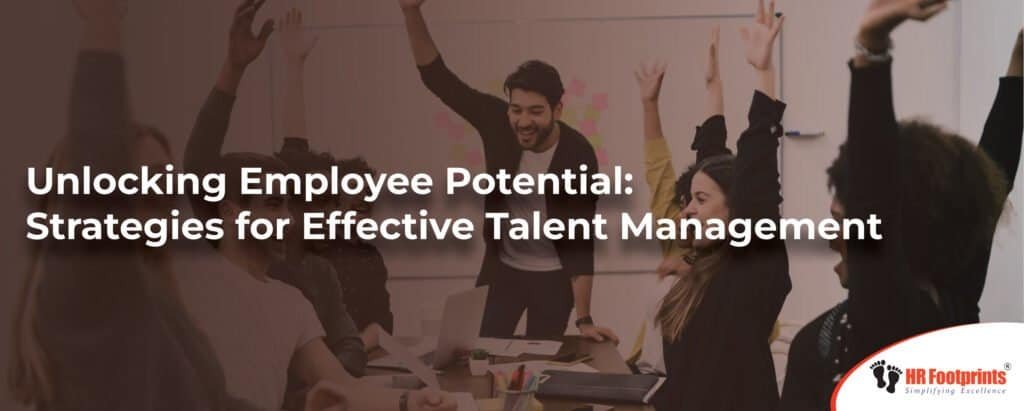In today’s rapidly evolving workplace, the ability to unlock and nurture employee potential is not just an HR goal but a strategic imperative that can distinguish a thriving company from a stagnant one. Effective talent management transcends mere employee satisfaction; it involves cultivating a workplace where every individual can grow, contribute, and thrive. Here, we explore 6 cutting-edge strategies that are currently shaping the future of talent management.
1. Fostering a Culture of Continuous Learning
In a world where change is the only constant, fostering a culture of continuous learning is crucial. Organizations that prioritize learning are more agile, innovative, and better equipped to respond to changing market dynamics. This can be achieved through:
- Personalized Learning Paths: Using AI-driven platforms to tailor learning experiences according to individual employee strengths, weaknesses, and career aspirations.
- Microlearning: Short, focused segments of learning that can be easily consumed on the go, perfect for busy schedules.
- Learning Sabbaticals: Periodic opportunities for employees to step back from their daily responsibilities to focus on acquiring new skills or completing intensive project work.
2. Empowering with Technology
Technology can greatly enhance how talents are managed and developed in an organization. From streamlined recruitment processes to sophisticated data analytics for performance management, technology stands as a pillar of modern talent strategy.
- Advanced Analytics: Utilize data analytics to understand workforce trends, predict turnover, and better align employee skills with organizational needs.
- Collaboration Tools: Implement tools that enhance communication and collaboration across different geographies, especially vital for remote and hybrid teams.
- Employee Self-Service Platforms: Enable employees to take charge of their own career development, from updating personal information to accessing training modules.
3. Emphasizing Emotional Intelligence
Emotional intelligence (EI) has emerged as a key element in leadership and team dynamics. Employees with high EI are adept at managing their own emotions and navigating interpersonal interactions judiciously and empathetically.
- EI Training: Incorporate emotional intelligence training into leadership development programs.
- Feedback Mechanisms: Regular and constructive feedback can help employees enhance their EI by understanding and managing their reactions to workplace challenges.
- Mindfulness Programs: Encourage practices that promote self-awareness and emotional regulation, such as mindfulness and meditation.
4. Creating Inclusive Work Environments
Inclusion isn’t just about filling quotas or being politically correct. It’s about creating an environment where diverse talent can truly flourish. This involves:
- Diversity Training: Equip employees with the skills to work effectively in a diverse environment.
- Inclusive Hiring Practices: Employ strategies that mitigate bias in hiring, such as structured interviews and diverse hiring panels.
- Employee Resource Groups (ERGs): Support ERGs that cater to different groups, providing them with a voice and ensuring their concerns and needs are addressed.
5. Flexible Work Arrangements
Flexibility can significantly boost employee morale and productivity. This means not just offering remote work options but also considering flexible hours and compressed workweeks.
- Remote-First Policies: If feasible, design work processes that prioritize remote work, allowing for talent recruitment from a broader geographic pool.
- Flex-Time: Allow employees to choose their work hours within certain constraints to accommodate personal responsibilities and preferences.
- Job Sharing: Implement job-sharing schemes that allow part-time employment opportunities and career progression.
6. Recognizing and Rewarding Talent
Recognition is a powerful motivator. Effective recognition systems are timely, frequent, and tied closely to the values and goals of the organization.
- Peer-to-Peer Recognition Programs: Enable employees to recognize their colleagues, which can enhance team cohesion and morale.
- Performance Bonuses: Use bonuses to reward outstanding work and tie them to clear and measurable outcomes.
- Career Advancement Opportunities: Clearly define paths for advancement within the company and tie these to performance and potential.
Unlocking employee potential requires a multifaceted approach tailored to the needs of the workforce and aligned with organizational goals. By integrating these strategies into your talent management framework, you can not only boost employee engagement and productivity but also position your organization as a leader in a competitive business landscape. Remember, the goal is to create an environment where all employees can tap into their fullest potential and contribute to the collective success of the organization.
Ready to unlock your employees’ full potential? Contact us today to explore our proven strategies for effective talent management and propel your organization towards success.




